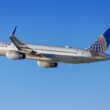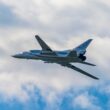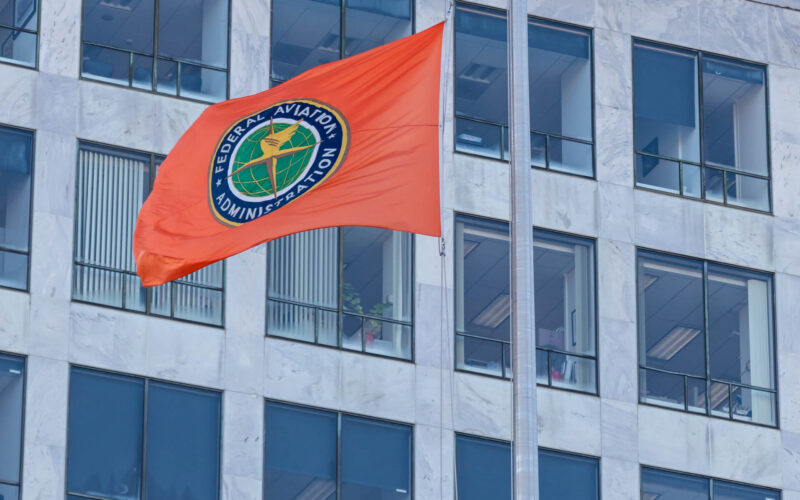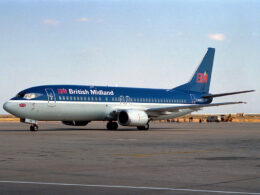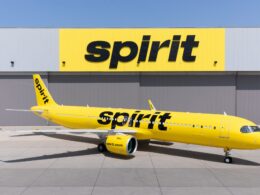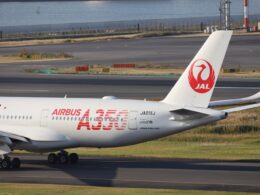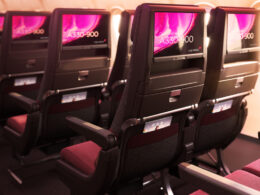The Federal Aviation Administration (FAA), throughout the recent history of commercial aviation, has been the global leader for aviation safety and, in the same vein, certification. Whenever a decision was made by the FAA, the world would follow suit. However, could the fallout from the 737 MAX crisis result in the FAA losing its status as a global leader of aviation authorities around the globe?
Historically, the FAA held the flag and was the leader on all fronts. When the DC-10 was grounded, for example, the U.S.-based authority was at the forefront of the decision. So in the lead that airlines based in Europe sued the FAA for allegedly overstepping its boundaries when the agency banned foreign-registered DC-10s to operate within the United States’ airspace.
Nevertheless, after the administration had grounded the tri-jet, “a number of foreign governments halted DC-10 flights in their airspace,” reported the New York Times in September 1981.
A more recent example could be the Boeing 787 Dreamliner groundings. After the 787 suffered several incidents involving its Auxiliary Power Unit’s (APU) lithium-ion batteries, the FAA grounded the wide-body on January 16, 2013. A day later, the European Union Aviation Safety Agency (EASA) issued a statement, whereupon the agency commented that it was working closely with the FAA as “the primary certification authority and Boeing.”
“EASA has this morning adopted the FAA Airworthiness Directive in order to ensure the continuing airworthiness of the European fleet,” the statement read. At the time, the European fleet consisted of two Boeing 787 Dreamliners operated by LOT Polish Airlines.
The Japan Civil Aviation Bureau (JCAB) followed the FAA as well, as the bureau “issued the airworthiness directive (Koku-ko-ki No. 92) based on the above mentioned FAA AD,” which ordered the groundings of the Dreamliner. Coincidentally, the two battery fires that prompted the suspension of operations of the 787 had been on Japanese-registered aircraft, belonging to Japan Airlines (JAL) and All Nippon Airways (ANA).
Reverse of roles with the Boeing 737 MAX
The second fatal crash of the 737 MAX seemingly created a rift between aviation authorities worldwide. On Sunday, March 10, 2019, Ethiopian Airlines’ MAX plunged into the ground shortly after departure. On Monday, March 11, 2019, the Civil Aviation Administration of China (CAAC) ordered all Chinese airlines to suspend all commercial operations with the 737 MAX.
“Given the similarities between the two accidents that the aircraft involved in both crashes were newly delivered Boeing 737-8 and both happened during take-off, CAAC issued a notice at 9 am on March 11 requiring domestic airlines to suspend the commercial operations of Boeing 737-8 aircraft by 6 pm.”
The next day, EASA followed suit:
“EASA issued a Safety Directive 2019-01 suspending commercial air transport operations with Boeing 737-8 MAX and Boeing 737-9 MAX by third country operators into, within or out of the territory subject to the provisions of the Treaty on European Union.”
The FAA was one of the last agencies to react. On March 13, 2019, the authority ordered a temporary grounding of Boeing 737 MAX aircraft, “as a result of the data gathering process and new evidence collected at the site and analyzed today,” read a statement by the FAA.
Boeing put the final nail in. Despite stating that the company had full confidence in the safety of the 737 MAX on March 12, the following day the manufacturer issued a recommendation to the FAA to temporarily suspend the entire global fleet of 371 delivered 737 MAX aircraft.
“Boeing has determined – out of an abundance of caution and in order to reassure the flying public of the aircraft’s safety,” reasoned the manufacturer at that time.
Long-lasting rift
The rift that appeared as timelines of the groundings of the 737 MAX differed, has only continued to deepen as the crisis has kept going.
Aviation authorities have indicated that they would not dance to the same tune as the FAA. In preparation to un-ground the jet, they would conduct test flights on their own accord. In September 2019, EASA’s executive director Patrick Ky appeared in front of the European Parliament’s Committee on Transport and Tourism (TRAN). Ky laid out the conditions for the aircraft to return to service in Europe, one of which was the fact that all design changes proposed by Boeing would be approved by the European agency, without any delegation to the FAA. The decision was made despite a bilateral safety agreement between the European Union (EU) and the US, through which the FAA can approve certain design features of a given aircraft without the intervention of EASA.
The second condition, which was “not very popular with our American colleagues,” noted Ky, was that the European agency would complete a broader overview of the design of the critical safety systems of the MAX. Due to the bilateral safety agreement, “those are the domains which we have not completely certified ourselves,” added the executive director.
The European regulator was not the only authority to communicate the need for a second opinion. Transport Canada (TC) insisted that it would validate Boeing and FAA’s work before giving the 737 MAX the green light to fly above the skies of Canada.
“We have our own list of requirements that we sent to the FAA at the onset of this, of areas we will be looking at validating the work of the FAA and Boeing prior to us issuing our own validation approval,” remarked Director general of civil aviation Nicholas Robinson in September 2019.
United Arab Emirates’ General Civil Aviation Authority (GCAA) chief executive Saif Mohammed Al Suwaidi shared a very similar sentiment in the same month, stating that the GCAA would “not follow the FAA” and that it would take a deeper look into the work that Boeing and, subsequently, the U.S. regulator had done. Australia’s Civil Aviation Safety Authority (CASA) spokesperson noted that the other regulators‘ decisions would “form part of our thinking” when the time came to make a decision whether to unground the aircraft in Australia.
The rift also seemingly created a power vacuum. A vacuum that is possibly about to be sealed.
EASA making strides
The governing body of Europe’s aviation, EASA, seemingly has been making moves to seal the vacuum over the past year.
On September 1, its Bilateral Aviation Safety Agreement (BASA) with China’s CAAC went into effect. The document was signed on May 20, 2019, two months following the second 737 MAX accident and the grounding of the type.
BASA allows the two aviation authorities to collaborate and simplify bureaucratic processes, including the certification of civil aeronautical products. The Technical Implementation Procedures (TIP) document, which outlines the details of the agreement between the two authorities, indicates that either of the two can essentially approve an aeronautical product and it would be validated and automatically accepted by the other. Type Certificates (TC) and Supplemental Type Certificates (STC) are included in the agreement, in addition to the fact that if either authority “evokes or suspends a TC or STC for a civil aeronautical product for which they act as Certificating Authority (CA), that Authority will immediately inform the other,” reads the TIP.
If any action is deemed necessary after an investigation and the suspension is justified, and the Validating Authority (VA) agrees with the CA’s decision, the former will also revoke or suspend the TC or STC.
The Chinese authority was not the only one that EASA shook hands with since the grounding of the Boeing 737 MAX. The European agency signed an agreement with Japan’s Civil Aviation Bureau (JCAB) that “will facilitate the validation of airworthiness certificates on aeronautical products between the EU and Japan.” These moves should not be surprising. During the same presentation whereupon Patrick Ky proceeded to explain the steps before the grounded aircraft could be approved to fly in Europe, EASA’s executive director also highlighted the agency’s short-term future strategy.
“We want to reinforce our presence on the international scene to support the European Union’s external policy and EU’s citizen’s needs,” commented Ky. Prior to 2020, EASA had bilateral agreements with three authorities, namely the FAA, TC, and Brazil’s Civil Aviation National Agency (ANAC) – quite an increase, considering the previously small number of bilateral agreements the European authority had.
FAA’s unstable political ground
At the same time, the FAA has been standing on unstable political ground for quite a while now. Its leadership structure was shaky, as between January 2018 and August 2019, the agency had no permanent Administrator. The current administrator Stephen Dickson was sworn in on August 12, 2019, for a five-year term.
The current White House office is not very welcoming towards the FAA in sustaining its global lead.
“Aviation, as a global business, is directly associated with international relations and decisions that are made there,” stated Vygaudas Ušackas, the former Minister of Foreign Affairs of Lithuania and current member of the Board of Directors in Avia Solutions Group. Such events as the 9/11 terror attacks, sanctions towards Iran and Russia, and the trade war between China and the United States “perfectly illustrate how aviation is dependent on the development of international relations,” added Ušackas.
“Thus, companies invest in human resources not only to ensure their compliance with sanctions but to also understand diplomatic processes and the potential implications to investment projects and after-market support of its clientele,” he commented further on aviation’s relationship with international relations.
“The industry, as a global business, is inevitably affected not only by various natural phenomena, but also the state of affairs in international relations.”
Tightening budget
The FAA, however, has another problem – its budget.
For FY2021, the agency requested $17.5 billion in government funds. The Government will only allocate $14.2 billion, including $30 million to “improve aviation oversight, following recommendations from the Boeing 737 MAX investigations and reviews, and to make investments in the systems that support the FAA’s ongoing safety oversight,” reads the White House’s “A budget for America’s future” document.
The agency has been fighting an ever-tightening budget, as the government sought to reduce spending.
For example, Donald Trump signed Executive Order 13771 in January 2017, titled “Reducing Regulation and Controlling Regulatory Costs.” The order had the intention for executive branches, including the FAA, to “be prudent and financially responsible” in spending their funds from both public and private sources.
“In addition to the management of the direct expenditure of taxpayer dollars through the budgeting process, it is essential to manage the costs associated with the governmental imposition of private expenditures required to comply with Federal regulations.”
Furthermore, for every new regulation that an agency would introduce, at least two “prior regulations be identified for elimination, and that the cost of planned regulations be prudently managed and controlled through a budgeting process.”

